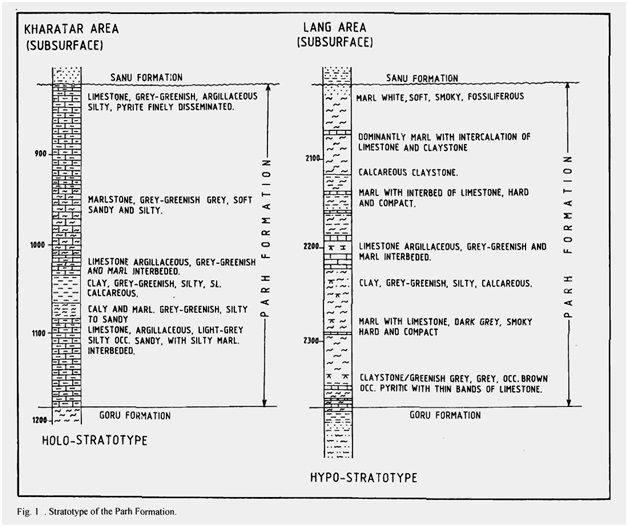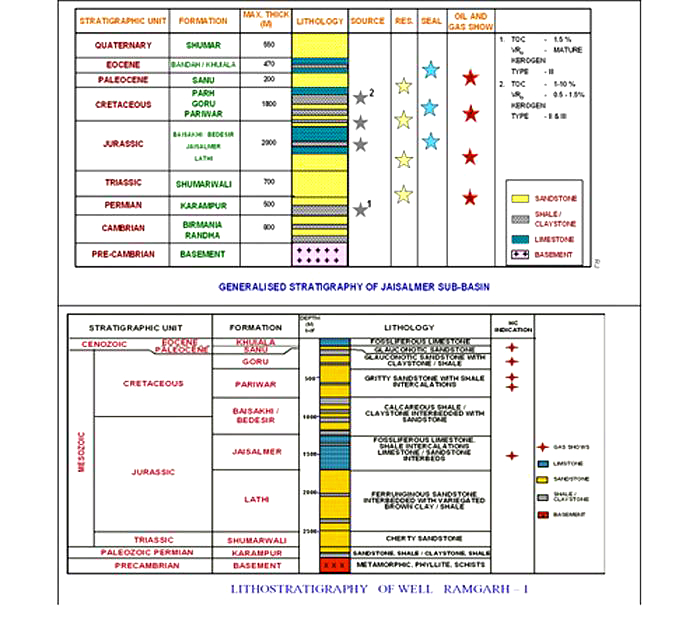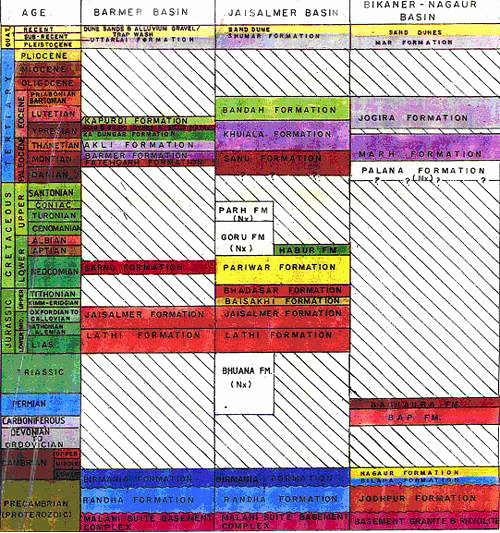Parh Fm
Type Locality and Naming
SUBSURFACE. A Well named Bakhri Tibba. Minimum thickness of the order 27m, Maximum thickness recorded is 369m in northern side in Sadewala Well. [Original Publication: Verdier, A.C., Willm, C and Brajon, J. 1967. Completion report on Kharatar wells No.1 and 2 (KT-1 and KT-2) Jaisalmer Project, ONGC-IFP report (Unpublished)]. Reference well: Well Kharatar-2, interval 822-1180 m, Well Lang-2, interval 2020.0-2375.0 m
Synonyms: The argillaceous limestone and marl sequence was first designated as "Parh Formation" by Verdier et al. (1967) from Kharatar well where it was first encountered during drilling. The nomenclature seems to have been picked up from the Indus Basin. Blanford (1876) used the word "Parh" to a thick sequence of limestone exposed at Parh hill on Gaj river in the Indus Basin (Pakistan).
Lithology and Thickness
Shallow-marine marl. In general, the marl, argillaceous limestone and calcareous clays, represent the formation (Fig. 1). The formation in the Kharatar type well section comprises thick, highly-clayey limestone in the basal part, which is grey, light grey to greenish grey, moderately hard to soft, occasionally pyritic, interbedded with greenish grey, calcareous clay and thin beds of grey to dirty white calcareous siltstone. The lithological sequence in the well of the Lang area is represented mainly by marl, calcareous clay and thin bands of argillaceous limestone. The clay is greenish grey, occasionally brown, soft pyritic and highly calcareous. The associated marl is buff to greenish grey, soft with thin beds of grey, buff, moderately hard, argillaceous limestone.
[Figure 1: Stratotype of Parh Formation, Mesozoic Lithostratigraphy of the Jaisalmer Basin, Rajasthan, Journal of the Paleontological Society of India, Vol. 51(2) (after Singh N.P, 2006)]
[Figure 2: Generalized and Subsurface Stratigraphy of Jaisalmer Basin (from dghindia.gov.in)]
Relationships and Distribution
Lower contact
Upper contact
GeoJSON
Fossils
The important planktic foraminiferal assemblages (correlatable with global biostratigraphic datum planes) namely Helvetoglobotruncana helvetiva and Marginotruncana coronata - M. sigali
Age
Depositional setting
Presence of argillaceous limestone, marl and calcareous clays/shales along with the rich assemblages of planktic foraminifera are suggestive of an open marine environment ranging from middle to outer shelf regime.
Additional Information


